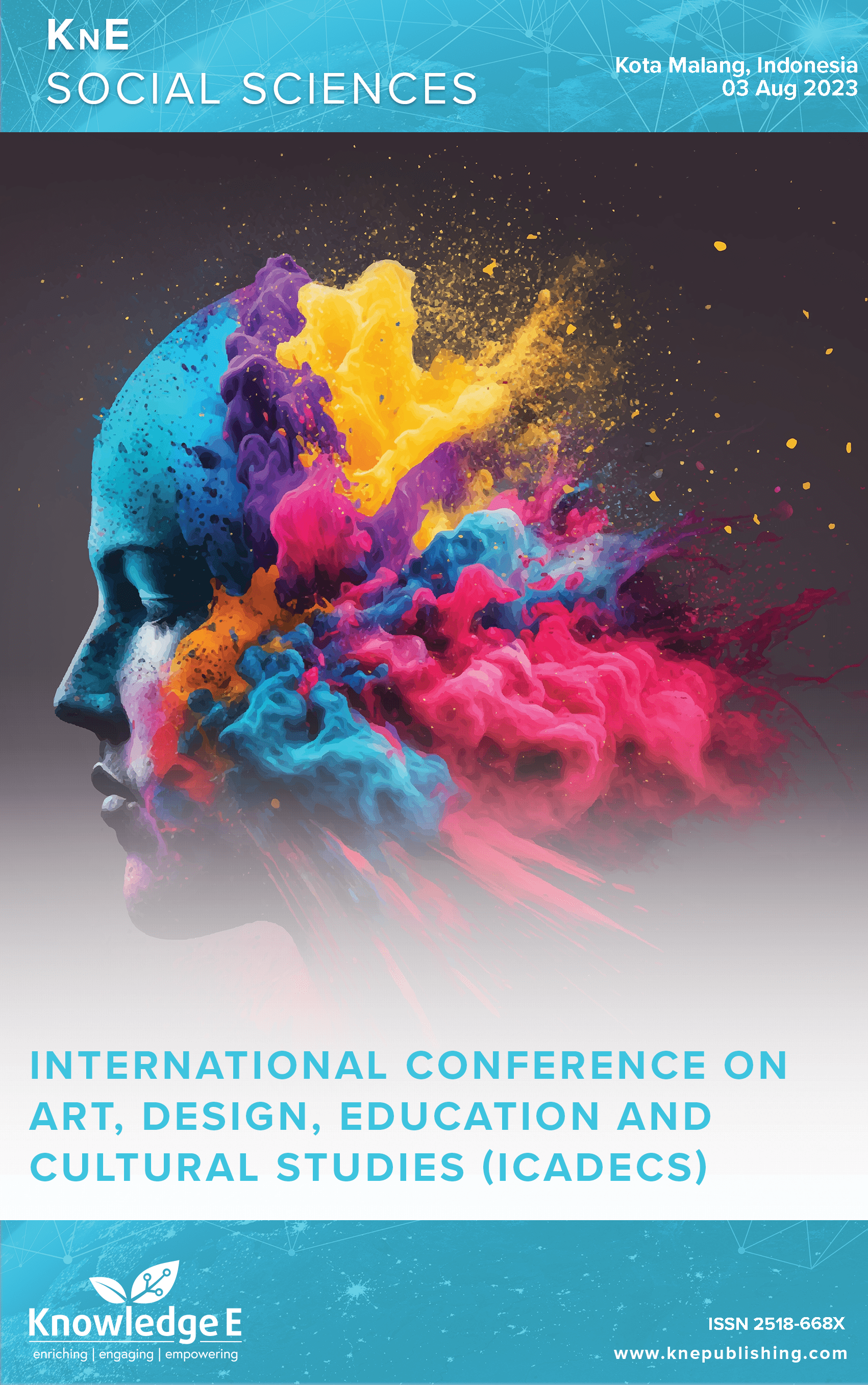Indonesia-Malaysia Batik Pattern Collaboration Creation with Artificial Intelligence Platform
DOI:
https://doi.org/10.18502/kss.v9i15.16210Abstract
The problem with making batik in Indonesia and Malaysia so far is that it is still very manual and has not taken much advantage of technological advances. The development of Artificial Intelligence (AI) technology is currently very advanced, continues to innovate, and has even touched various aspects of human life. Limitations in ideas, human resources, knowledge, tools, and internet networks are the dominant conditions that cause problems in Indonesian and Malaysian batik creations. This study aims to use Artificial Intelligence to describe the combination of Indonesian and Malaysian batik patterns. This paper uses a descriptive-qualitative method with an experimental approach in the form of trials for the creation of batik patterns using the Imagine Artificial Intelligence platform; each trial is based on three basic patterns of batik, namely Sawat and Gurdha (Indonesia) and Orchid and Tiger (Malaysia). The results of this paper generated eight totally new Indonesian-Malaysian batik patterns. Artificial Intelligence (AI) was very helpful for the development of batik patterns. Through the creation of new batik patterns with the support of Artificial Intelligence (AI), it certainly creates new opportunities for the creation and business of batik to become more advanced. It is hoped that this paper will succeed in solving the problem of limited ideas in creating Indonesian-Malaysian batik motifs.
Keywords: Artificial Intelligence, batik, creation, Indonesia-Malaysia
References
Marr B. Artificial Intelligence in practice: How 50 successful companies used AI and Machine Learning to solve problems. America: Wiley Publishing; 2019.
Berente N, Gu B, Recker J, Santhanam R. Special issue: Managing Artificial Intelligence. Manage Inf Syst Q. 2021 Sep;45(3):1433–50.
Ratnawati I. Challenges to batik’s existence: Preserving philosophical values against accelerated batik production. KnE Social Sciences. 2022 Aug; 7(13):56–61. DOI: https://doi.org/10.18502/kss.v7i13.11644
Salma IR, Eskak E. Keeping the genuine of batik in the age of Artificial Intelligence. Proceedings of the 4th International Symposium of Arts, Crafts & Design in South East Asia (ARCADESA); 2020. pp. 1–8. DOI: https://doi.org/10.2139/ssrn.3807704
Wibawanto W, Triyanto, Cahyono A, Rohendi TR. Digital innovation for traditional batik crafter. People: International Journal of Social Sciences. 2020 Oct;6(2):568– 74. DOI: https://doi.org/10.20319/pijss.2020.62.568574
Wibawanto W, Rohidi TR, Triyanto T. D-batik: Development of batik motifs with digital techniques. Proceedings of the 5th International Conference on Science, Education and Technology, ISET 2019; 2020. pp. 1–6. DOI: https://doi.org/10.4108/eai.29-6-2019.2290325
Ratnadewi R, Pandanwangi A, Prijono A. Implementation of art and technology in batik Purwakarta. JTAM Jurnal Teori dan. Apl Mat. 2020 Apr;4(1):64–75. DOI: https://doi.org/10.31764/jtam.v4i1.1872
Ihsan AF. A study of batik style transfer using neural network. International Conference on Information and Communication Technology (ICoICT); 2021 Sept. pp. 313–9. DOI: https://doi.org/10.1109/ICoICT52021.2021.9527490
Gondoputranto O, Dibia IW. Use of technology in capturing various traditional motifs and ornaments: A case study of batik fractal, Indonesia and TUDITA-Turkish Digital Textile Archive. Humaniora. 2022 Feb;13(1):39–48. DOI: https://doi.org/10.21512/humaniora.v13i1.7408
Ji S, Pan S, Li X, Cambria E, Long G, Huang Z. Suicidal ideation detection: A review of machine learning methods and applications. IEEE Trans Comput Soc Syst. 2021 Feb;8(1):214–26. DOI: https://doi.org/10.1109/TCSS.2020.3021467
White J, Fu Q, Hays S, Sandborn M, Olea C, Gilbert H, et al. A prompt pattern catalog to enhance prompt engineering with ChatGPT. Arxiv Preprint. 2023 Feb.
Haefner N, Wincent J, Parida V, Gassmann O. Artificial Intelligence and innovation management: A review, framework, and research agenda. Technol Forecast Soc Change. 2021 Jan;162:1–10. DOI: https://doi.org/10.1016/j.techfore.2020.120392
Rorong MJ, Rovino D, Prasqillia MN. Konstruktivisme Estetika Kaligarafi Batik Motif Lar (Analisis Semiotika dengan Perspektif Charles Sanders Peirce). Semiotika: Jurnal Komunikasi. 2020;14(1):32–47.
Puryanti P, Hermanu J, Wahyuni S. Study of Javanese philosophical values in Kliwonan batik from Sragen District, Central Java, Indonesia. Asian Journal of Ethnobiology. 2022 Jul;2(1). DOI: https://doi.org/10.13057/asianjethnobiol/y020105

